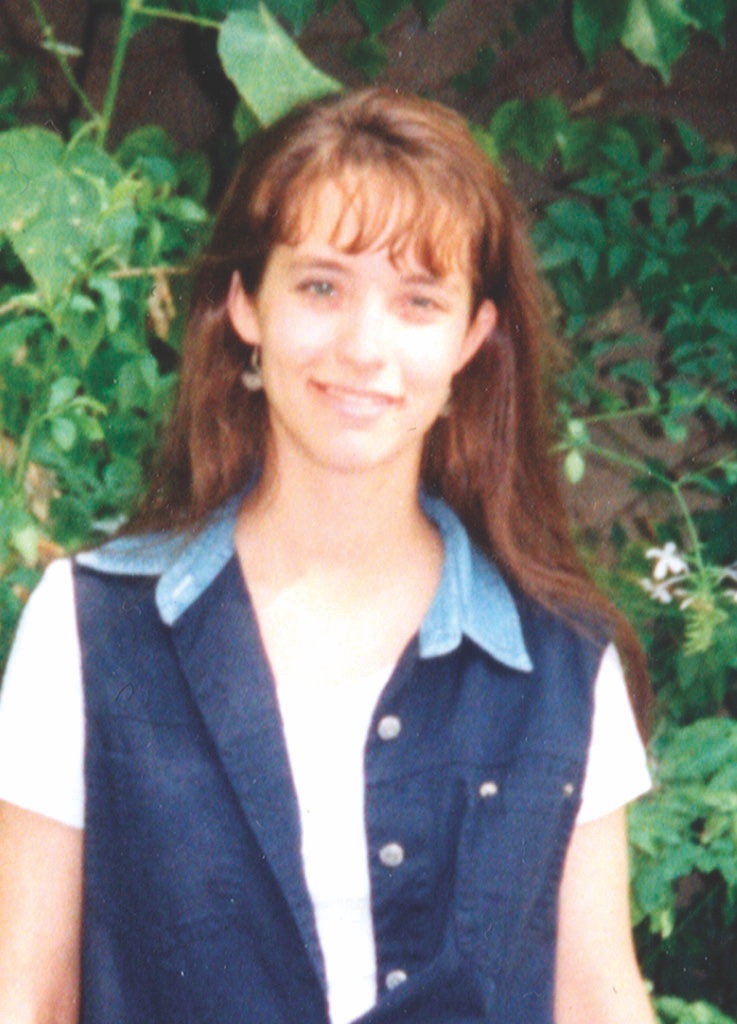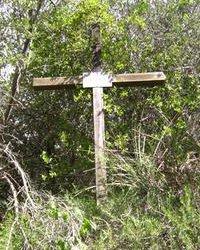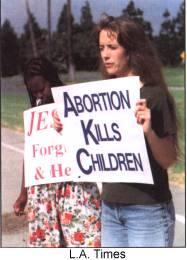Student’s Heroic Death Continues to Teach the Value of Redemptive Suffering
March 3, 2022. It is the second day of the spring 40 Days for Life campaign in Ventura, California. The calendar is mostly empty, not surprising as the campaign gathers momentum, but already, Thursdays are full. Students from nearby Thomas Aquinas College (TAC) have signed up to take practically every hour of the Lenten vigil. At 7 am, they’re already standing on the sidewalk in front of Planned Parenthood—a bit tired but smiling, Rosaries in hand.
It wasn’t always this way. Twenty five years ago, students at the liberal arts college had little involvement with pro-life activism. Understandably so. Immersed in a challenging Great Books curriculum, they spent their days in class and their evenings reading Plato, Aristotle, and St. Augustine. In between, many students sandwiched work study hours. Finding time to pray in front of an abortion clinic was difficult. In addition, there was an acknowledgement that to spend four years at the tiny Catholic college is to take a break from the world to contemplate the truth. The campus’s remote location, nestled in the mountains outside of Santa Paula, California, reinforces this sense.
That began to change in the fall of 1997, when a dark haired, green eyed sophomore named Angela Baird spoke to a group of friends about praying at Family Planning Associates, an abortion clinic on a tree lined street in midtown Ventura.

Angela was no stranger to pro-life activism. Since ninth grade she had been a sidewalk counselor in her hometown of Spokane, Washington. During her first year of college, that activism had taken a back seat to some very typical freshman concerns: balancing classes and work-study, finding her place in the campus community. She loved parties, country music, hanging out with friends, and was outspokenly opinionated in class.
At the beginning of her sophomore year, however, friends and faculty noticed a change. Angela became serious about her prayer life and would frequently sneak away to the small college chapel. “It was a very noticeable thing,” says Marie (Sale) Daly, who was in her classes that year. “She had always been loving and kind—that was not something new to her—but she just seemed very peaceful.”
“Last year she was a typical restless teenager,” college chaplain Father Bart de la Torre told National Catholic Register later, “and this year she had become a calm, prayerful, peaceful woman.”[i]
Not surprising, then, that Angela’s new seriousness led her to unite a deeper prayer life with her longtime zeal for the unborn. That fall of 1997, she and a few friends began going to the abortion clinic each Thursday—the day when Family Planning Associates scheduled surgical abortions. On the sidewalk, they prayed the Rosary, handed out literature and counseled women who were going into the clinic. It was a half hour drive to and from campus, and a thankless job: there were honks of support but also raised middle fingers and ugly expressions of rage.
The first Wednesday of November, Thomas Aquinas students were enjoying a mid-semester break. The weather was balmy and a group of students, including Angela, planned an evening hike and overnight camping trip in the mountains. They would hike down the next day in time for the weekly trip to Family Planning Associates. Around 6:30 pm, they set off up the trail, carrying backpacks, coats and flashlights. The trail was familiar, even at night: they were headed to the “Punchbowls,” natural pools that were a popular hiking spot.
Jon Daly, a junior at the time, was at the back of the group with Angela. Ironically, Jon was an expert rock climber and had taken Angela and some other students rock climbing earlier that day. Jon noted later how carefully she followed the climbing safety rules her dad, a safety instructor, had taught her.
But neither was aware that part of the trail they were hiking had washed away. As they climbed the last hill before the Punch Bowls, Angela turned to say something to Jon, took a step back, slipped, and disappeared into the darkness before he could stop her.
The pause before Jon heard the impact told him Angela had fallen a great distance. He quickly found a short cut and ran down to the base of the cliff. “This was a fall of 70 feet, straight down onto rock,” he said in a 2017 interview. “There was nothing along the way to break her fall.” He found Angela laying next to the cliff, conscious but struggling to speak.
Two students ran for help. Others stayed with Angela, trying to keep her warm and awake until paramedics arrived. Daly used a shirt to cover a large gash on her head.
During that time, said Daly, “She never complained. She never cried out in pain.”[ii]
“For Aborted Babies”
When the students realized that Angela might be dying, Jon asked her what she wanted to pray for.
Angela responded “for aborted babies,” Daly wrote later to her parents, Michael and Peggy Baird. “I will never forget that reply; her love for the unborn and the aborted is one of the most beautiful things about Angela’s life.”
Daly placed his Rosary in Angela’s hand as the group prayed and waited on the dark mountain: the Rosary, the Hail Holy Queen, the Act of Contrition. “Angela was the strongest one of us down there,” Daly wrote. As she grew weaker it was difficult for her to respond and she asked her friends to pray to her Guardian Angel for her.
Freshman Shannon Gaffney was one of the students with Angela that night. “I will never forget how beautiful she was, even as she struggled to keep up as we finished each Hail Mary,” she said in a letter to the Baird family. “There must have been so many angels surrounding us on the mountain.”
Three long hours later, paramedics arrived and airlifted Angela out of the ravine, an arduous process because of the rough terrain. It was 11:30 p.m. by the time the helicopter arrived at Ventura County Medical Center.
Emergency room personnel sized up her injuries: a broken spine, compound fractures in arms and legs, large gashes on her leg and on her head, injuries to her pelvis, and massive internal bleeding and injuries. Amazingly, she was still awake and talking when she was wheeled into surgery.
The paramedics told Daly afterward that Angela was so calm, they fully expected her to pull through. But around 1:00 a.m., the girl whom friends called “a fireball” breathed her last.
It was Thursday, November 6. Angela Baird would not be praying at Family Planning Associates. Instead, those entering the abortion clinic saw an astonishing sight: nearly 100 students gathered on the sidewalk. Tears flowed as they prayed fifteen decades of the Rosary and the Divine Mercy chaplet.
In the days after Angela’s death, there was an outpouring of grief and prayer that included the doctors, nurses and paramedics who had worked to save her life. The following week saw a procession up the trail to the accident site, where students raised a hand-made, six foot tall cross.
As her parents and nine siblings struggled to cope with the loss, her mother observed, “You can’t help but be happy to see that she really did achieve that Christian ideal every parent hopes for their child. As Catholic parents we want our children to get to heaven, to be saints, to live holy lives, and at 19 she did that in remarkably less time than it will take most of us.”[iii]
Her Legacy
Twenty-five years have passed since that dreadful, yet glorious, night. Yet Angela Baird’s story continues.

The immediate effect of her death was a flurry of newspaper stories in California and Baird’s home state of Washington.
A more lasting effect was the tradition of sidewalk prayer that TAC students continued faithfully after Angela’s death. Thursday afternoons saw as many as twenty students praying at Family Planning Associates.
One Thursday, students arrived at the clinic and noticed something strange: the usually busy parking lot was almost empty. Freshman Meghan Patterson went inside to inquire and was told that the abortion business was closing, and that day was its last in operation.
It was November 6, 2003, exactly six years to the day from Angela’s death.
The former Family Planning Associates site sat weedy and undeveloped for over 15 years. TAC students shifted their efforts to the local Planned Parenthood, and passed the torch of pro-life leadership from one generation of students to the next.
National Catholic Register published an article on Baird just weeks after her death, written with emotion by TAC alum Karen Walker. A small book entitled Princess of the Unborn came out in 1998.[iv] And a few articles in the Catholic press have commemorated the passing years since her death.
Yet I doubt this explains what I heard repeatedly as I wrote this article: “I’m glad you’re writing this. Angela has been on my mind lately.” It became a familiar refrain, telling me this young woman, dead for 25 years, is very much alive.
“The Communion of Saints became real to me”
Was Angela Baird a saint? Reflecting on this, Jon Daly says simply “I’ve never for a moment wondered if she’s in heaven.” But, he continues, “She was a real person. Real people have real struggles, and they’re not perfect.”
“When she died, the Communion of Saints became real to me,” says Daly. “When Angela died, I realized, those are real people. I pray to her regularly, as do a lot of people. She does answer prayers.”
“It did pierce my heart”
In the Communion of Saints, mysterious connections abound. Case in point: Dr. Deirdre Byrne, a former army doctor and medical missionary who arrived at Ventura County Medical Center (VCMC) in 1998, several months after Angela Baird’s death. Doctors and nurses at the busy hospital were still talking about the heroic college student.
“People found out real quick that I was Catholic,” says Byrne. “That’s when everyone told me about Angela and how she moved them with her devoutness. She was bleeding to death, and while they were rushing her to the operating room, she said, ‘I’m offering all my sufferings for the unborn.’ She made a mark on everyone. Anyone who was there that day would not forget.”
Dr. Byrne spent two years at VCMC, training missionary doctors and completing her board certification in surgery. In 2000 she joined the Little Workers of the Sacred Heart, uniting dual vocations of physician and religious. She had already set her heart on the religious life when she heard Angela’s story, but “it did pierce my heart a lot,” she says. “I thought, if I could be that heroic.”
Twenty years later, Sister “Dede” gave her own witness to the sanctity of life, delivering a moving pro-life testimony at the 2020 Republican National Convention.
Angela’s story is “embedded” in her mind, says Byrne, because she was fearless. That is what makes her witness so compelling.
A sister’s pilgrimage
The Bairds had not known of Sister Dede’s connection to Angela until a friend brought it to their attention after the speech. “My family was very moved,” recalls Madalene (Maddi) Baird, Angela’s youngest sister. “After hearing that story, Angela was on my mind and in my heart frequently. I had the sense that Angela was trying to get our attention.”
A few weeks later, a friend invited Maddi to visit Los Angeles. She realized the visit was a chance to see to the spot where her sister had fallen. She would be the first of the Baird clan to make what would surely be an emotional pilgrimage.
They agreed upon the first Friday in November. Opening her calendar to pencil in the date, Maddi was shocked: November 6, the anniversary of her sister’s death. “I felt sure that this was not a coincidence and that Angela wanted me to make that trip,” she says.

Standing at the site of the cross, overlooking the ravine where Angela had tumbled into the darkness that night, was “a bittersweet thing” for Maddi Baird. “I was eight when she died— I had always imagined what that cliff looked like or wondered how she managed to slip on the trail. Being there made all those details come alive for me.”
Although her family has a strong sense of Angela’s intercession, “I think what is truly more powerful are stories like that of Sr. Dede,” says Maddi. “It is amazing to me that 25 years after her death people still remember and are impacted by her.”
The paradox of redemptive suffering
Why did God allow Angela Baird to die? The question became an ongoing meditation as I wrote this during Lent. I attended Triduum services at her alma mater, and continued to reflect. On Holy Saturday, in a candlelit chapel full of hopeful young faces, she was still in my thoughts.
Like the students around me, she had so much to look forward to. She could have lived a long life, counseled many women, done a great deal of good in the pro-life movement. Was her death a tragedy?
I found my answer in Corinthians 1:18: “For the word of the cross is folly to those who are perishing, but to us who are being saved it is the power of God.”
Perhaps the devil chortled that night on the mountain, seeing a vibrant young life cut short. He did not —and could not—anticipate the grace that would transform a tragedy into a triumph. After all these many years, redemptive suffering still makes no sense to him. He was confounded by this folly on Good Friday, and he is confounded by it today.
Growing up, my mother used to say to us, “Offer it up.” In 1997, Angela Baird—a young woman of great promise— did just that, offering up unimaginable suffering for the cause of the unborn. Twenty-five years later her story continues to unfold, in prayers answered and lives touched.
[i] In Death, A Teenager Looks Beyond Her Own Suffering, Karen Walker, National Catholic Register, November 30, 1997.
[ii] TAC Student Remembered 20 Years After Death She Offered for ‘Aborted Babies’, Jim Graves, Blog, National Catholic Register, March 22, 2017.
[iii] National Catholic Register, November 30, 1997
[iv] Princess of the Unborn, Theo Stearns, Catholics United for Life, 1998
Image: Thomas Aquinas College, Ventura, CA. By Angel DiBilio on Shutterstock










